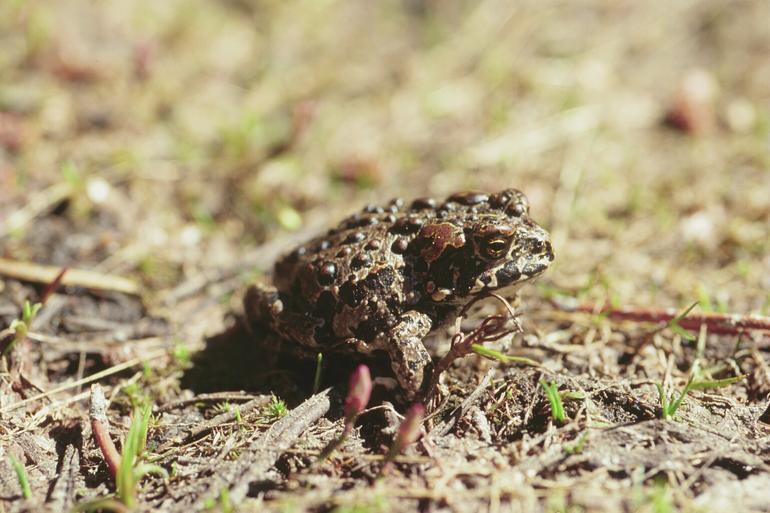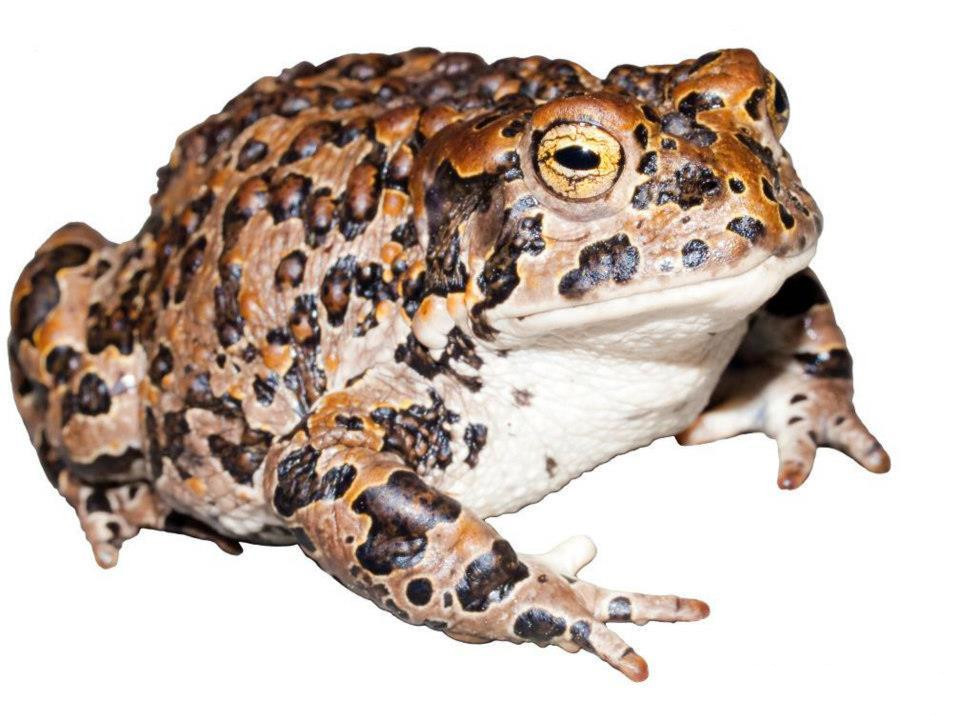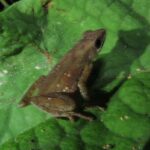The Melodious Mountain Dweller: Discovering Anaxyrus canorus (Yosemite Toad)#
Beneath the soaring granite peaks, amidst the wildflower-dappled meadows and crystalline alpine streams of California’s Sierra Nevada mountains, an inconspicuous yet enchanting amphibian species makes its quiet home. The Yosemite toad, scientifically known as Anaxyrus canorus, is not merely another frog amidst the forest floor; it is a harmonious sentinel of delicate high-altitude ecosystems. Named “canorus,” Latin for “melodious,” this toad is remarkably musical, its rhythmic trills resonating through springtime valleys with subtle yet striking beauty.
While relatively obscure outside scientific or conservationist circles, the Yosemite toad offers vital insights into high-altitude biodiversity, climate impacts, and ecological balance. Its melodic calls capture not just attention but imagination, symbolizing resilience, adaptation, and the fragile interdependencies deeply woven into its alpine habitat.
Taxonomy and Classification#
Classified within the Bufonidae family, Anaxyrus canorus is part of the genus Anaxyrus, formerly recognized collectively with North American toads under the genus Bufo. Recent taxonomic revisions separated American species distinctly as Anaxyrus, underscoring their unique evolutionary adaptations to New World conditions. Closely related species include Anaxyrus boreas (western toad), but Anaxyrus canorus distinguishes itself through distinct behavioral, ecological, and morphological characteristics tailor-made for high-altitude environments.
Natural Habitat#
Geographic Range and Preferred Terrain#
The Yosemite toad is an endemic species, its range restricted almost entirely to the high altitudes of California’s Sierra Nevada mountains. Primarily, its habitat spans elevations ranging from 4,800 to over 12,000 feet, where mountain meadows, ephemeral streams, alpine lakes, and subalpine wetlands provide a mosaic of rich habitats meticulously suited to its life cycle and behavioral patterns.
These environments are sculpted by harsh winters, fleeting summers, and the perpetual dance of snowmelt waters—an ephemeral landscape where timing is everything. The Yosemite toad’s intricate connection with snowpack dynamics makes it particularly vulnerable yet remarkably adapted to this niche existence.
A Symphony of Mountain Meadows#
In early spring, as the snow recedes in fragmented patches, the lush alpine meadows transform into a scene brimming with life. Here, the Yosemite toad harmonizes with the season’s tempo, orchestrating its crucial activities—feeding, breeding, and nurturing the next generation—within the narrow temporal window when wetlands bloom vibrantly amidst alpine peaks.
Crystal-clear pools fed by snowmelt provide vital breeding waters, while surrounding vegetation and high-altitude soil offer shelter and nourishment. The delicate equilibrium of temperature, moisture, and seasonal cycles in these mountain habitats are uniquely suitable for this sensitive amphibian, posing both opportunity and challenge with each cyclical transition from winter’s stillness to spring’s renewal.
Physical Characteristics#
Modestly sized yet visually intriguing, adult Yosemite toads typically measure between 1.5 to 2.5 inches (3.7–6.4 cm) in body length. Sexual dimorphism, a distinct difference in appearance between males and females, is pronounced in this species. Females often embraced striking patterns, adorned with vibrant colors from olive to brown, punctuated with dark spots and blotches. Males often bear paler hues and fewer contrasting marks, an adaptation possibly linked to mating and camouflage strategies.
A combination of dry, subtly textured skin scattered with small, wart-like glands distinguishes Anaxyrus canorus from sleek-skinned, aquatic frogs. These glands, while seemingly modest, play vital roles, secreting toxins that provide an effective defense against predators. Short limbs with slightly webbed hind feet make hopping and gradual movement possible as it navigates gently moving waters and damp vegetation among rocky terrains. Such physical attributes culminate in superb camouflage, crucial for predator-avoidance and concealment in an often exposed alpine habitat.
Behavior and Life Cycle#
Melodic Mating Calls and Social Rituals#
True to its name, the Yosemite toad’s distinctive trait is its beautifully melodic call, a gentle, trill-like serenade audible over considerable distances. With precision timing, males emerge from winter hibernation around late spring and early summer, positioning themselves conspicuously awaiting potential mates. These enchanting choruses ripple across peaceful alpine meadows, weaving a symphonic tapestry of nature’s delicate rhythms.
Females, attracted by the acoustically vibrant signals, arrive at these communal breeding pools to select mating partners. Afterward, they deposit strings of fertilized eggs in shallow waters. The submerged eggs, intricately linked like strands of underwater jewelry, number hundreds and sometimes thousands per clutch—a poignant testament to nature’s strategy for ensuring survival despite myriad environmental challenges.
Tadpole Development and Metamorphosis#
Upon hatching, Yosemite toad tadpoles adapt swiftly to ephemeral and precarious pools, rapidly developing in limited aquatic habitats prone to drying by summer’s end. Accelerated growth transforms these vulnerable tadpoles into miniature toadlets within weeks, a survival race against an ever-changing alpine environment. Newly metamorphosed toadlets venture onto terrestrial ground, adopting cryptic coloration and behaviors to evade predation. Each transformation boosts their odds of survival, preparing them expertly for eventual maturity and reproduction.
Ecological Role#
The ecological significance of Anaxyrus canorus extends beyond its presence in narrow niches. Serving simultaneously as predator, prey, and valuable bioindicator, Yosemite toads offer indispensable benefits to alpine biodiversity and ecosystem stability. Tadpoles help control aquatic algae and detritus; juvenile and adult toads consume a variety of insects such as mosquitoes, ants, and beetles, moderating insect populations naturally.
Likewise, as prey items for diverse predators—birds, snakes, and mammals—the Yosemite toad contributes essential biomass and energy transfers across trophic levels, sustaining complex food webs intrinsic to alpine ecosystem functionality. Their sensitivity to environmental changes further highlights the Yosemite toad’s immense importance as an indicator species; a steady decline signals potential underlying issues requiring urgent conservation attention.
Threats and Conservation Status#
Mounting Challenges#
Regrettably, the unmistakable harmonies of Yosemite toad choruses are becoming increasingly scarce across the Sierra Nevada. Habitat alteration through prolonged droughts, changing snow melt patterns, climate shifts, introduced predatory fish in alpine waters, and chytridiomycosis—a devastating fungal disease—combine to place intense pressure on population stability. Such multifaceted threats reduce breeding success and recruitment, multiplying extinction risks exponentially.
Recognizing the rapid population declines, authorities and conservation groups officially classified Anaxyrus canorus as a federally “Threatened” species, warranting habitat protection, management plans, and careful monitoring programs aimed at restoring populations across its limited range.
Conservation Efforts#
Dedicated scientists, land managers, and conservationists tirelessly pursue strategies such as ecosystem-based restoration, invasive species removal, and disease mitigation research. Monitoring and minimizing impacts of climate change remain top priorities, with studies into adaptive habitat management and assisted relocations gaining traction. Educational outreach programs emphasize awareness, fostering community involvement and political engagement essential for effective, enduring conservation.
Cultural and Scientific Significance#
Though its diminutive size may belie great cultural prominence, the Yosemite toad symbolizes intrinsic harmony found within nature and the delicate web connecting all living organisms. Native folklore often celebrates high-altitude amphibians, linking them metaphorically to cleansing, renewal, and resilience.
From a scientific perspective, research focusing on Yosemite toads yields invaluable insights into ecological resilience, disease epidemiology, climate-related adaptations, and conservation biology. Indeed, this unassuming species provides essential evidence of how climate change reverberates profoundly through sensitive ecosystems—a sentinel echoing alarms researchers cannot ignore.
A Melodic Call to Action#
As wildlife enthusiasts, conservation advocates, and caring individuals drawn by the delicate symphony of nature, we hold collective responsibility to ensure the Yosemite toad’s continued survival. Understanding, appreciation, and collective action form cornerstones for restoring this enchanting toad to its rightful role in mountain meadows.
Support ongoing conservation efforts, educate others about alpine biodiversity’s significance, and cherish every melodious trill as a reminder of nature’s vulnerability—and its extraordinary capacity for resilience. Let the captivating call of Anaxyrus canorus inspire real, meaningful conservation for generations to come.















